On Nomadism
Introduction
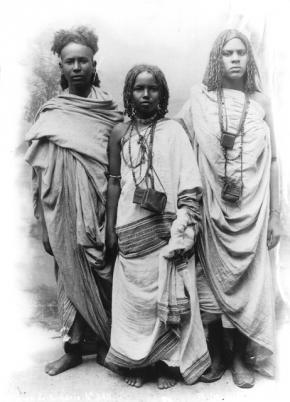 bisharinNomads can be understood in different contexts, as in an anthropological sense, nomads as a new concept in philosophy and nomads as a real and metaphorical concept for new artistic praxis both in real and metaphorical senses. The real sense refers to art among nomadic people, while the metaphorical usage pertains to the use of nomadism in new artistic and theatrical creations.
bisharinNomads can be understood in different contexts, as in an anthropological sense, nomads as a new concept in philosophy and nomads as a real and metaphorical concept for new artistic praxis both in real and metaphorical senses. The real sense refers to art among nomadic people, while the metaphorical usage pertains to the use of nomadism in new artistic and theatrical creations.
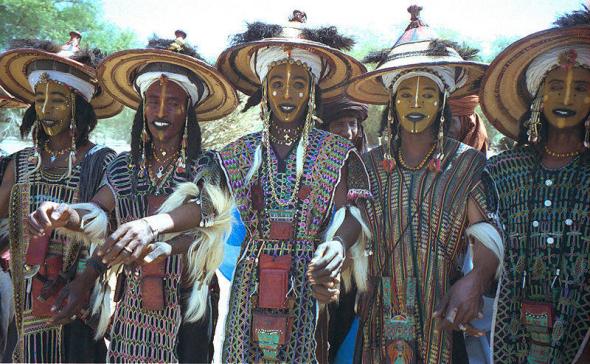 cure salee
cure salee
The term Nomads is derived from the Greek nemo (to pasture) and refers to the lifestyles of groups of people and social types characterized by the lack of a permanent residence or settlement. Nomadic groups are normally hunters and gatherers, but there are also some Nomads, who are classified as pastoral, meaning that they live on crops, which they cultivate at different locations. They are found all over the world, but there is a certain concentration of them in East Africa and the Middle East.
The main notion of nomadism as a life form is associated with the hunters and gatherers as well as with those who live on tamed animals, which they follow to the locations where food for the animals is to be found at different seasons. Examples of the hunting Nomads are the Inuit people of the Arctic in Greenland, Canada and Siberia. So, too, are the Aborigines of Australia and other parts of the world, like the Bushmen in South Africa. The Sami people are known to have long culture, during which they made a transition from hunters to tenders of tamed reindeer.
In the northernmost county in Norway, Finmark, the Sami would follow the reindeer from their winter quarters in the interior part of the county in this vast Lapland Area, and go with them to islands along the coast of the Arctic Sea, such as the island of Mageröy where North Cape is situated. Their special language and culture have to some extent survived in their authentic form, especially among the Sami population in northern Scandinavia and in some parts of Russia. According to the Macmillian Dictionary of Anthropology, they are called transhumant, which means those who move around seasonally according to the pasturing needs of their animals.
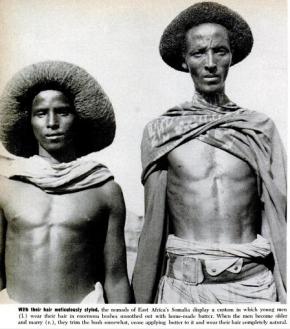 gemToday the Sami people to a large extent have become settled; only a few thousand out of a population of approximately 70,000 still live as transhumant Nomads. The Sami people in Norway have their own parliament, and many of them still live with many of their traditional values intact. After many years of linguistic oppression, the Sami language has been accepted as an official language in Norway. They have their own broadcasting station and academy, and many of the young urbanized Sami people have become cultural workers. Some of them have also worked in the Norwegian State Television Company to produce entertainment series, like the one about a Sami president travelling around the world on official state visits and speaking about the Sami people, as if they were a major ruling people of the world. The cultural profile of the Sami people has become a model for similar initiatives among aboriginal people elsewhere in the world.
gemToday the Sami people to a large extent have become settled; only a few thousand out of a population of approximately 70,000 still live as transhumant Nomads. The Sami people in Norway have their own parliament, and many of them still live with many of their traditional values intact. After many years of linguistic oppression, the Sami language has been accepted as an official language in Norway. They have their own broadcasting station and academy, and many of the young urbanized Sami people have become cultural workers. Some of them have also worked in the Norwegian State Television Company to produce entertainment series, like the one about a Sami president travelling around the world on official state visits and speaking about the Sami people, as if they were a major ruling people of the world. The cultural profile of the Sami people has become a model for similar initiatives among aboriginal people elsewhere in the world.
The philosophical use of the term nomads is connected to metaphorical ways of thinking, as demonstrated in the “Traité de nomadologie: La machine de guerre”, by Gilles Deleuze and Félix Guattari, who apply the notion of mobility connected to nomads as a metaphor for war. This connection is linked to the fact that historical nomadic warlike people such as the Mongolians could move fast on horses and strike by surprise. The idea of making a state derives from the fact that war machines can be kept in a state of permanent mobility. Paradoxically enough, the state founders used those nomads, who had learned how to handle metallurgical techniques. Historians seem to think that nomads and their war machines became instruments for them, like the Mongolians for the Chinese and the Tartars for the Russians (Nomadology: The War Machine, p 73).
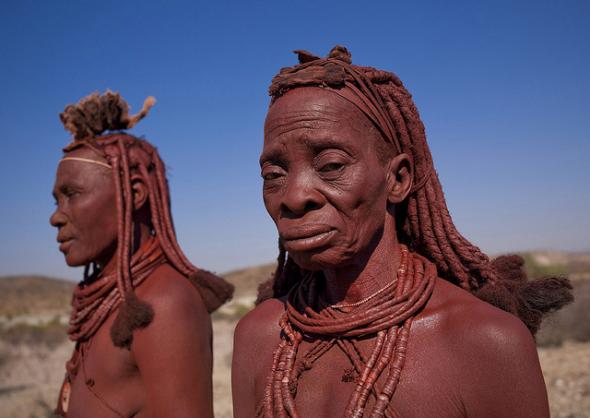 himba
himba
This philosophical explanation, then, can be applied to art theory. Artists can be looked upon as mobile people, moving through different geographical areas to learn and to produce. It is also connected to the notion of aboriginal art, as in the concept of songlines or ritual landscapes. The English writer Bruce Chatwin is well known for his book Songlines, describing this phenomenon of Australian aborigines, who create invisible traces on landscapes, which can only be seen or understood by those who know the codes. This knowledge could save people from getting lost in the desert.
Nomadic Art in the Past
 Ritual landscapes can also be found among Arctic people, for example, in the area of the Sami in northern Scandinavia, where tundra landscapes are scattered with burial sites and other landmarks made of stone heaps that can be used as points of orientation. When the archeologists of Tromsö Museum first took interest in these sites, they were not able to describe them decently because of problems in localizing them. They needed help from specialists in the Sami society and religion to find them. In the Inuit Arctic landscape of Canada, these landmarks are known under the name of inukshuk, “stonemen”, also referred to as “dreamstones”, as described in the children’s book Dreamstones by Maxine Trottier and Stella East. Other aspects of nomadic art in the past are related to the stone paintings such as are found in South Africa, Scandinavia and other parts of the world. In Johannesburg in the Africana Museum there is a stone- painting collection, which clearly documents the ritual function as well as the sites of the stone paintings, dating from the Stone Age up to the European discovery. This idea is portrayed, for instance, by ships of European origin being reproduced as stone paintings.
Ritual landscapes can also be found among Arctic people, for example, in the area of the Sami in northern Scandinavia, where tundra landscapes are scattered with burial sites and other landmarks made of stone heaps that can be used as points of orientation. When the archeologists of Tromsö Museum first took interest in these sites, they were not able to describe them decently because of problems in localizing them. They needed help from specialists in the Sami society and religion to find them. In the Inuit Arctic landscape of Canada, these landmarks are known under the name of inukshuk, “stonemen”, also referred to as “dreamstones”, as described in the children’s book Dreamstones by Maxine Trottier and Stella East. Other aspects of nomadic art in the past are related to the stone paintings such as are found in South Africa, Scandinavia and other parts of the world. In Johannesburg in the Africana Museum there is a stone- painting collection, which clearly documents the ritual function as well as the sites of the stone paintings, dating from the Stone Age up to the European discovery. This idea is portrayed, for instance, by ships of European origin being reproduced as stone paintings.
As a past and present activity one could mention the figures made as bone carvings, as found in the Canadian Inuit societies. These are figures of a strikingly stylized and abstract character. The American Indian Totems made out of wood are very much connected to American Indian historical settlements, as, for instance, in British Columbia. Their almost monumental carving techniques, wooden constructions and architecture were well documented in the huge exhibition at the Museum of Man and Civilisation/Musé d’homme et de civilisation in the City of Hull in Québec, Canada, in 1995.
The powwow is a festive occasion that Indians of North America have been organising to celebrate friendship and social exchange, by dancing and drumming in given spaces. White authorities would worry about them, because expensive gifts were given on a large scale, and there was the fear that they would waste their fortunes this way. In our days the powwow has increasingly become a tourist attraction.
Mask dancing in Greenland, as performed by the Greenland actress Makka Kleist, who lives in Tromsö, is an example of how ritualistic dance and expressive performance serve as an integrated part of the culture. The performers wore masks that were used for shamanistic purposes, but also had the function to scare children.
Shamanistic activities are a topic of their own, but here it should be mentioned that they are widespread throughout the whole arctic region. The shaman in Sami language is noaide, and his way of getting in touch with the animal souls is by drumming, which would create a trance. This trance would enable him to contact especially the bear souls. It was necessary to stay in reasonable touch with the animals that were hunted, because they were essential for food and other materials. Bear-rituals are especially known and described in Siberia.
Nomadic Art in the Present
Nomadic art in the present is either the continuation of traditional techniques of handicraft such as the above-mentioned bone carvings, which are made for sale. It also deals with the continuation of the traditional rituals insofar as they have not been taken away by the emergence of external religious practices. This has been the case with the Sami people, whose shamanistic traditions were prohibited by the Christian Lutheran church. Their drums were almost all destroyed by Christian missionaries in the 17th and 18th centuries. But the rediscovery of this historical culture gives new inspiration to present-day artwork.
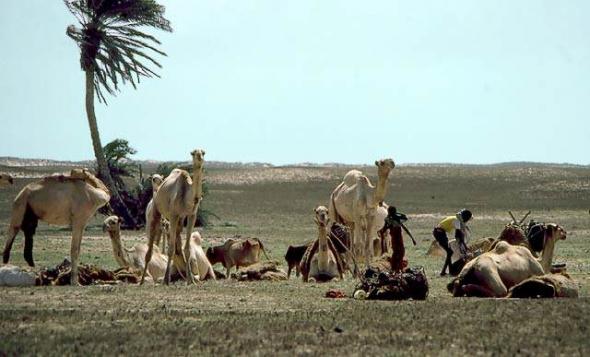 setting up camp
setting up camp
The subject of nomads in literature is a broad topic that has yet to be investigated, but in dramatic writing several Canadian/American-Indians and Canadian-Inuits have contributed, along with Norwegian and other Scandinavian Sami writers, both in the past and present. In this context, however, I would especially mention the Canadian dramatist Thomson Highway, whose plays have been performed at some of the cultural centres for indigenous art, for example, in Toronto. The Sami musical singform Joik is widely known and has some excellent performers such as the Finish-Norwegian Nils Aslak Valkeapää, who is also a poet. Marit Boine is a Norwegian music artist, who has gained world fame. Her musical technique is based on the Joik tradition. It can be characterized as a melodic singing of verses, which explain moods and situations.
Sami Visual Art and Theatre
In a Sami context there are some visual artists of significance, like Iver Jåks who is a thorough nomad in the sense of working with stray wooden material found washed up along the seashores. He has made sculptures from such materials in a combination of wood carvings and installation art. His exhibition in the Tromsö Art Society in 1999 demonstrated the excellence of this kind of art work, which combined different identities of both a formal artistic background and the specific arctic context. Such driftwood can float all the way from Siberia to the shores of Finmark.
Let us have a look at nomadic art/performance in the sense that they are produced by a historical, predominantly nomadic people as the Sami. The Sami theatre group Dalvadis Teatter from Karesundo in northern Sweden, was to me the first example of this kind, in the sense of combining means of expression from ritual to performance with elements of nomadism. This was in 1987, and I saw them giving a guest performance in Stockholm. They were very clearly mixing performance art techniques with ritual approaches in the intersection between different traditions.
The name of the production in Swedish was “8 minuter från solen” (8 Minutes before the Sun), and there was a striking contrast between attachment to a theatre of bodily energies, reminiscent of the Greenland theatre group Tukak, and a play with not-acting and of performance art character. The basic structure of the action was dramaturgically fragmentary, dealing with the relationship with two Sami girls, vigjheamit in the Sami language, and the shaman, noaide, who at the same time was acting as the wild animal, the coyote. On the other hand, he represented the threatening urban, industrial culture of the majority, subverting the Sami native culture. This production was directed by Ida-Lotta Backman, and with the American Irokese Indian, Norman Charles, in the dual role of the shaman/coyote. Irokese Indian traditions of shamanism were combined with Northern Scandinavian Sami shamanism, thus joining different, “migrating” Northern Hemisphere traditions. Dalvadis, which was probably the first Sami theatre group, was closed some years ago for lack of cultural support from the Swedish authorities.
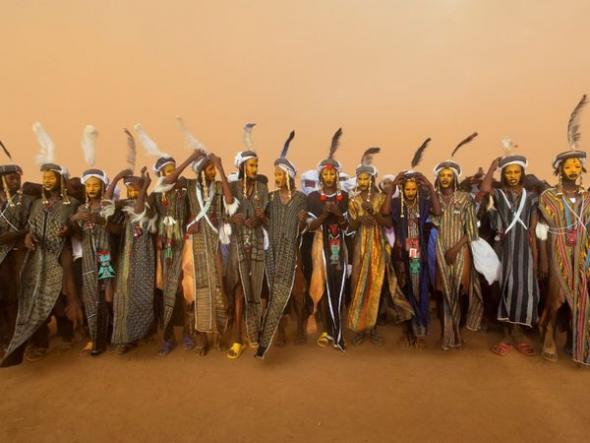 wadabee
wadabee
In Norway an official strategy for Sami culture was more elaborately developed than in Sweden, enabling a Sami theatre group to exist, supported as a regional, professional company in the Sami village of Kautokeino in the County of Finmark. This was started some years after the Norwegian professional company had been founded in the arctic region’s capital Tromsø in the early seventies: The Hålogaland Theatre, named after the old historical name of the region. This happened in connection with the discovery of a strong regional cultural identity, something that also took place within the Sami population. But while as far as the Norwegian language theatre of Norway could nourish itself from the fact that Norwegian professional theatre had already existed for more than 150 years in the south, the new Sami theatre had to draw from more or less different sources. One of the people advising the new Sami theatre as a dramaturge was the Danish playwright and philosopher Ulla Ryum. Per Brask from the Drama department at the City University of Winnipeg, Canada, has published an interview with her on aboriginal theatre.
Ulla Ryum points out that aboriginal people, the so-called fourth world people, has started to use theatre and urban media to express their self-respect. Sometimes, as in the film by Nils Gaup, “The Pathfinder” (1987), they use a standardised dramaturgical form, based on the Aristotelian tradition. But the theatre prefers other dramaturgical forms, because of their more unconventional structures in both working processes and because their own myths are often of a non-realistic character. “Cultural archeology” is an expression that Ulla Ryum employs to understand the complexity of ethnic cultural traditions as described in Interculturalism and Performance by B. Marranca and G. Dasgupta (pp. 160-161).
Beaivvás Sami Teater was established as an independent group in 1981 and has been operating since 1990 with a permanent state subvention. In the winter of 1991 this theatre participated with other partners, like the Hålogaland Teater, in making an arctic version of Bertolt Brecht’s The Good Woman of Sezuan, using ice sculptures as scenery and acting outside in very cold winter temperature, with the actors moved around on snow scooters. The director Jos Gronier was Dutch. Another Beaivvás production was “Narukami”, based on a Japanese legend, already dramatised 600 years ago. They managed to perform it in a genuine Sami way, based upon Sami ritual traditions emphasising magic and poetry. Significant to their intercultural approach, is the fact that their director in chief for several years, Haukur J. Gunnarsson, is from Iceland. It seems clear that these kinds of turning points in arctic theatre are of both regional/national and of international/intercultural character. Such theatre is not isolated but borrows inspiration and materials freely from different parts of the world.
Nomads as a Metaphorical Concept for Art
The concept of nomads has had a great impact on new creation in the arts. New ways of understanding context and biography in the arts have largely led to a replacement of aesthetics by context, expressed by more or less imperfect acts of documentation or different kinds of live art events. These have been either biographical or marked by personal exploration. This trend is partly connected to artistic migration, which began in contemporary ways before the fall of the iron curtain. Already in the 1970s a large number of artists from communist block countries started moving to the centres of mainstream culture in Western Europe to gain education and artistic practice. Some of the best-known examples are Marina Abramovicz and Ulay, who portrayed the wandering from each side of the Great Chinese Wall, a project that was completed in 1988.
In their introduction to Cultural Diversity in the Arts Ria Lavrijsen and Otto Romijn write: “/…/The question is whether in the nineties leeway will be granted for new and other visions of quality, voiced by people who are not part of established art circles. These groups are eager to participate in the art world, as arbiter who stand open to other qualities, to cultural differences, to other aesthetics and other parameters, to a renewal of modern and postmodern art, and to a recognition of pluralism” (p. 13). Crossing boundaries and nomadism are concepts being dealt with as parameters to describe new ways in art in this publication, also including what is called metaphoric detachment: “/…/…, meaning some insight into life, into the imagination, into feelings by which we can group our thoughts in various ways” (ibid., p. 14).
A genuine expression of nomads is in the post-mainstream movement of new artistic activities. It is both of a global and of a local or regional character, and can be used as a concept to describe what happens when mainstream movements are exhausted. It also mixes styles and traditions that could not be combined in a mainstream concept for reasons of aesthetic purity or trend fixation. It can be described in terms such as cultural identity and nomadism, and it can be ritual and ethnic as well as media connected or story telling. “Hybrid”, then, might be most appropriate as an aesthetic metaphor. Examples of post-mainstream theatre are young local theatres, as found in the Italian Adriatic Area, in urban centres of multiculturalism and in remote regions with ethnic populations or strong regional identity. A good example of the latter is arctic Scandinavia. In this area there are examples of productions of both energetical and performance art characters, very similar, in fact, to what can be found in North America or even in Australia.
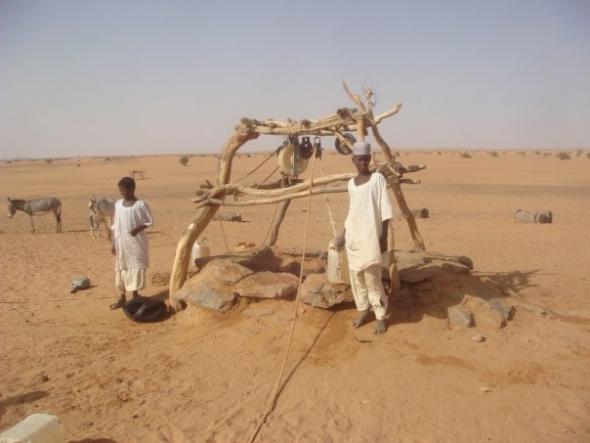 Watering hole sudan
Watering hole sudan
Landscape art projects reflect the nomadic notion of moving as well as the ritual landscapes of holy or sacral sites. Artscape projects are advancing in numbers, as in connection with the scuptural project of “Artscape Nordland” in northern Norway. That project, which can be visited anytime, stands between the urban and the local or the regional and the local. The artists of this project were predominantly “mainstreamers”, but the context itself is of the marginal kind with its colourful mosaic of identities.
Danish artist Elsebeth Rahlff has a personal history as some kind of a messenger tramp, being born in Copenhagen, growing up in New Zealand and now living in Bergen. Her work on artscapes of flags could be called a post-mainstream experiment in landscape art. Elsebeth Rahlff’s flags are pierced with holes, and the patterns of these holes correspond to symbols that paraphrase the different national flags of the world. The basic colours of these flags is grey, but when they are hanging on flag poles the colours become nuanced to give the impression of being black rather than grey, an effect caused by the contrasting lights. One can imagine this artscape of flags as a collection of moving or migration, wherever they are exhibited, as in Rio de Janeiro, Berlin, Reykjavik or Brussels.
Searching for identities instead of aesthetic fulfilment is also an aim of Western artists, like the French Christian Boltanski, who has been working on personal biographical materials combined into sculptures or installations. A Polish artist I choose as an example of nomadism from Eastern Europe is Robert Sot, who lives and works in Bergen, Norway. His work as an artist can be described as the fulfilment of the tramp messenger. Examples of his work are the combination of live art and painting, as represented by his work “In Search of Ideal Worlds” (Bergen 1995). Keywords for the artwork of Robert Sot are memory, recycling of materials and personal biography. As an artist Robert Sot is a tramp or nomadic tramp. On a global scale one could mention the performance and installation artists gathering around the Embassy of the Nomadic Republic and carrying the Nomadic Passport organized by the art centre Le Lieu in Quebec City, Canada.
The work of Robert Sot relates to Catholic religious art as kitsch, thus reminding one of the global hybrid art works that can also be found in the Caribbean with their mixture of voodoo and Christian elements. This was an expression of contemporary art that could be clearly seen at the Container Exhibition of Copenhagen Cultural Capital 1996. A Norwegian newspaper described the exhibit as follows: “There must be millions of them: The containers that are carried by ships across the oceans” (Bergens Tidende, 13.06.1996). So in this way the containers are turned into metaphors for movement and transportation also in the arts, which had been exhibited at some of the biennials of the mid 1990s in Johannesburg, Sao Paulo and Istanbul, among other places. In Sao Paulo Korean artist Duck-Huyn Cho had constructed a metal box that was supposed to give the impression of coming from the interior of the globe. In Istanbul Ayse Erkmen constructed some kind of a container lift, as a metaphor for the harbour city at the Bosporus. The aim was to indicate that contemporary Turkey had contributed a great number of guest workers to other countries. Guest or immigrant workers also represent a nomadic element in our time.
Norwegian Inghild Karlsen’s work with performance and installations led her also to stage design and scenography in such national theatres as those in Bergen and Oslo, doing scenography for productions of plays by the Norwegian innovative dramatist Cecilie Løveid. What is important in the context of nomadism, cultural identity and post-mainstream developments in arctic direction, are her two works of visual performance and new theatre, Namadis and The Polygonal Journey. Namadis was a project in co-production with the Bergen International Theatre Festival in 1988, in Bergen, using a former German fortification from the Second World War as space, inside and outside. There was also an installation in the Bergen Art Society, and a production performance, showing the process of felting, with Inghild Karlsen herself and her assistants, in Tromsø, Norway. She exhibited a camping car at the bienniale in Sao Paulo in 1994. Of course, there were also later activities in the theatre such as performances of Inghild Karlsen’s dramatic works.
The visual performance was inspired by aboriginal myths or ritualistic legends, formed into tableaux, which transformed the myths from telling into visual arrangements with music and sound effects. The means of expression were to be on an equal footing as well as interrelated. The title refers to the Latin name for felt, namadis, and sounds almost like nomade. The scenic action inside the fortification was arranged so that the audience was enclosed within the action as spectators unable to escape, as voyeurs in the ritualistic sense. The seven goddesses with their different abilities related to objects are presented. They are handed over to the male order, represented by the “box man”, who attacks them physically. The new society produced this way, is the “tube-man society”, with the box man living in polygamy. Only one goddess survives; the rest are carried away by the tube people. Later the goddesses are restored as mourners or crying woman.
The story seems simple, but the visual implications are even more important. The Earth Ball is big, white and made of felt. It is being carried outside onto the roof of the fortification, where it is held symbolically by the vanishing goddesses and where it is left behind by an audience leaving by the same pathway they came, a pathway illuminated by torches. In our view, this reflects a mythical universe, performed in terms of rituals but also within the form of a visual kind of dramaturgy. At the same time it tells us how visual performance or new theatre can be used in an intercultural context. A young actress from the Faroe Islands had come to participate, together with a dancer from the Philippines.
On an even bigger scale was “The Polygonal Journey”, which took place in March 1990 in The Auroral Observatory in Tromsø. It was also an installation as well as a visual performance, including Danish and Japanese partners. About the installation outside and in the entrance of the Observatory, the critic Lotte Sandberg wrote:”/…/A narrow path has been dug in the deep snow. Along it there are stakes with arrowheads, crosses, tents and different geometrical objects made of felt. In front of the entrance to the Observatory there is a group of figures with their heads bowed - ‘mourners’ made of light and dark felt”, as it is stated in “The Polygonal Journey” (p. 41). This gives us the link to Namadis, where woman were turned into mourners in the performance itself. Willie Flindt, a Dane known for his work with former Billedstofteater and Hotel Pro Forma, developed the visual performance together with Inghild Karlsen. The music and No-play sequences were presented by the Japanese music and performance group The Dumb Types from Kyoto. According to my article on the scenic production, one could make the following analysis: “/…/The emphasis was on the visual framework, to which the textual elements can be said to have been subordinated” (ibid).
In the 1980s there has been a development in visual dramaturgy in the independent project theatres towards a certain equality between the visual and the textual. This trend is reflected in Willie Flindt and Inghild Karlsen’s performance, in which the tension between the visual and the textual is produced in a juxtaposition with the Japanese No-theatre tableau. It is also evident in the Danish actress Else Fenger’s rhetorical-gestured declamation of the Old Icelandic poem ‘Voluspà’”. This was the core of the performance; the rest was supplementary” (“The Polygonal Journey”, p. 42).
To day a shift of emphasis in perspectives is taking place, from formal and aesthetic analysis to emphasis on cultural identity and interculturalism. This development could have led me to another conclusion, namely, that the core of the performance was the exchange of cultural identities. This result would also involve an explanation of “hybrid” as the conscious recycling of both identities and means of expression as well as materials or textual fragments that are being used variously in nomadic artistic praxis, be it metaphorical or not.